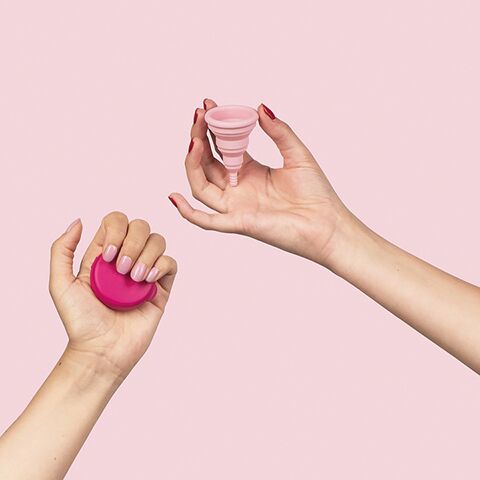
Talk of switching from disposable synthetic pads and tampons to menstrual cups and period underwear is sweeping the western world currently.
Advertisements for period underwear are on constantly on YouTube, and the growing popularity of menstrual cups causing established companies such as sex toy manufacturers FunFactory and Jimmyjane to create their own lines. Are these a realistic alternative?
Period underwear seem like a dream to a lot of people, and in reality, they can be an absolute lifesaver. More so they are a huge reassurance. Thinx is the most commercial brand and definitely top of the line. They don’t come cheap, many people have opted for trying out incontinence underwear as an alternative but these don’t always work the same and can be just as expensive.
The Thinx underwear were recently released on UK website ‘Soda’, which made them available for delivery to Ireland also. Currently, Soda are offering free shipping to the UK and Ireland.
They only stock three of the styles, each £1 dearer than the next, from £26 (€29) to £29 (€32.50). The high-waisted style is the most expensive, and the sport style the cheapest, though there is obviously very little difference.
The packaging for the Thinx underwear is well thought out and very welcoming. You receive care instructions with the underwear – that they are to be rinsed before being placed on a cold wash and hung dry. The underwear themselves feel like swimsuit material, but smoother. They are comfortable, and they definitely work.
The lighter styles of the Thinx underwear is said to hold up to one tampon worth of fluid, while other styles (the vast majority of which were not listed on the Soda shop website) such as the high waist style, can hold up to two tampons worth of menstrual fluid.
It’s useful that Thinx use tampons as a unit of measurement to help buyers understand which style will work best for them. They also recommend that the underwear, particularly on heavy days, be worn mostly as leak protection. The panties are suggested to be worn with your menstrual cup, pad, or tampon.
It has also been mentioned that these underwear are suitable for those with weak bladders, or women with high levels of discharge particularly surrounding the time of menstruation.
Thinx underwear work, but many people do not want to go through the trouble of washing their underwear a certain way, or spending €30 if they can’t even wear it alone 100% safely. It’s easy to understand why you would say that the panties are pointless since it’s suggested you use other forms of protection without it, but that seems like more of a disclaimer than anything. Particularly when it’s not the heaviest day of your period, many people have attested to using the period panties solo.
Now for the soft and unobtrusive menstrual cup. Menstrual cups are basically the exact same no matter where you get it – though cheaper brands are often thinner and less reliable.
Cups are inserted similarly to a tampon though sit lower in the vagina, and works through suction. Costing around €30, and said to last for ten to fifteen years at least, the menstrual cup is very alluring to many people.
It’s easier to focus on the few drawbacks of the menstrual cup rather than stating the often repeated benefits.
Firstly, you have to get used to being comfortable with touching your own blood.
Using a menstrual cup is not so much messy as it is graphic. It’s easy enough to use in a public bathroom if it’s essential to change it – use either a tissue or a wet wipe to give it a small clean before re-inserting. But still you have to have clean hands to insert and remove the cup, and you will definitely be confronted with a lot of blood in a way you probably haven’t before unless you’ve had the experience of bleeding out overnight from an unexpected period.
There are methods for using the menstrual cup when you are camping or in similar situations – but remember that becoming more sustainable is not linear. It is ok to use panty liners the odd time, or other methods that you made have used previously. As long as you are using less you are still going towards sustainability and that is what counts.
Are these seemingly new-fangled methods of menstrual hygiene really practical for the college girl? Absolutely! It is just as easy to integrate these sustainable methods as it may have been to start using the more classic methods when you first started getting your period. Easier, in fact.
Don’t be stressing over perfection when it comes to ethical choices, especially when you’re trying something new. The pressure to be the most ecologically aware person alive is heavy, but small steps are always going to be better than none.
Béibhinn Thorsch
Image Credit: Pixabay



